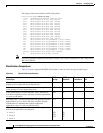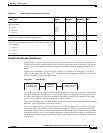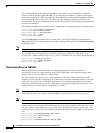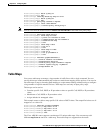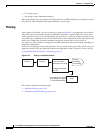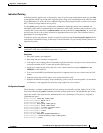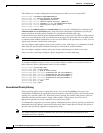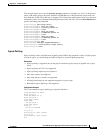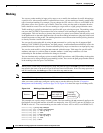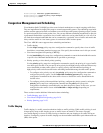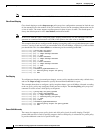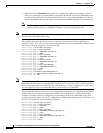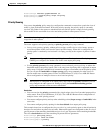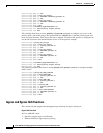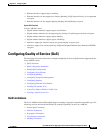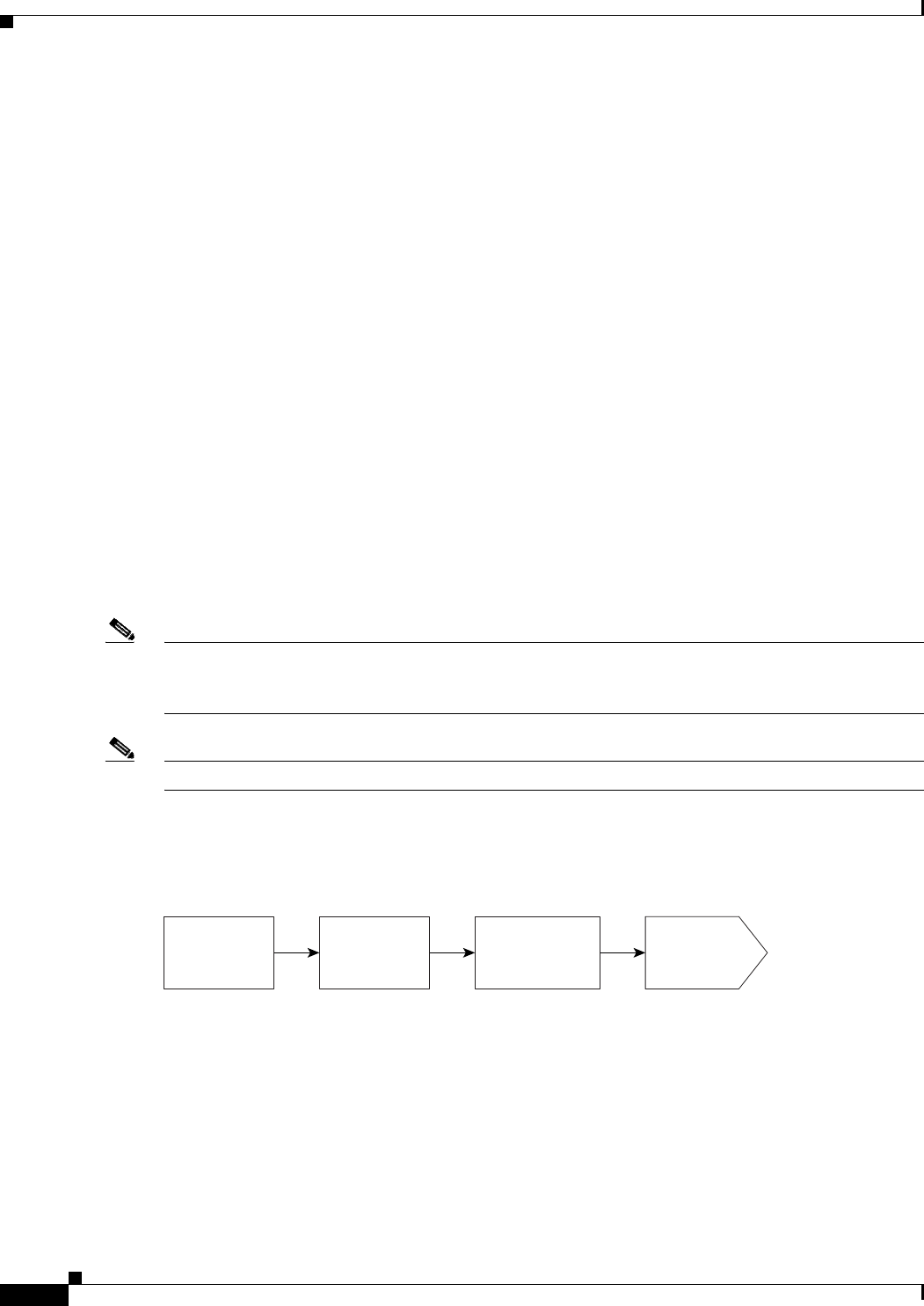
24-18
Cisco ASR 901 Series Aggregation Services Router Software Configuration Guide
OL-23826-09
Chapter 24 Configuring QoS
Understanding QoS
Marking
You can use packet marking in input policy maps to set or modify the attributes for traffic belonging to
a specific class. After network traffic is organized into classes, you use marking to identify certain traffic
types for unique handling. For example, you can change the CoS value in a class or set IP DSCP or IP
precedence values for a specific type of traffic. These new values are then used to determine how the
traffic should be treated. You can also use marking to assign traffic to a QoS group within the router.
Traffic marking is typically performed on a specific traffic type at the ingress port. The marking action
can cause the CoS, DSCP, or precedence bits to be rewritten or left unchanged, depending on the
configuration. This can increase or decrease the priority of a packet in accordance with the policy used
in the QoS domain so that other QoS functions can use the marking information to judge the relative and
absolute importance of the packet. The marking function can use information from the policing function
or directly from the classification function.
You can specify and mark traffic by using the set commands in a policy map for all supported QoS
markings (CoS, IP DSCP, IP precedence, and QoS groups). A set command unconditionally marks the
packets that match a specific class. You then attach the policy map to an interface as an input policy map.
You can also mark traffic by using the set command with table maps. Table maps list specific traffic
attributes and maps (or converts) them to another attribute. A table map establishes a to-from
relationship for the attribute and defines the change to be made.
You can simultaneously configure actions to modify DSCP, precedence, and COS markings in the packet
for the same service along with QoS group marking actions. You can use the QoS group number defined
in the marking action for egress classification.
Note When you use a table map in an input policy map, the protocol type of the from-type action in the table
map must be the same as the protocol type of the associated classification. If the class map represents a
non-IP classification, the from-type action in the table map must be cos.
Note Cisco ASR 901 transparently preserves the ECN bits while marking DSCP.
After you create a table map, configure a policy map to use the table map. See the “Congestion
Management and Scheduling” section on page 24-19. Figure 24-6 shows the steps for marking traffic.
Figure 24-6 Marking of Classified Traffic
This example uses a policy map to remark a packet. The first marking (the set command) applies to the
QoS default class map that matches all traffic not matched by class AF31-AF33 and sets all traffic to an
IP DSCP value of 1. The second marking sets the traffic in classes AF31 to AF33 to an IP DSCP of 3.
Router(config)# policy-map Example
Router(config-pmap)# class class-default
Router(config-pmap-c)# set ip dscp 1
Router(config-pmap-c)# exit
Router(config-pmap)# class AF31-AF33
Router(config-pmap-c)# set ip dscp 3
Router(config-pmap-c)# exit
Router(config-pmap)# exit
157193
Receive
Classify
Queuing,
scheduling,
and shaping
Unconditionally
mark traffic for
reclassification



